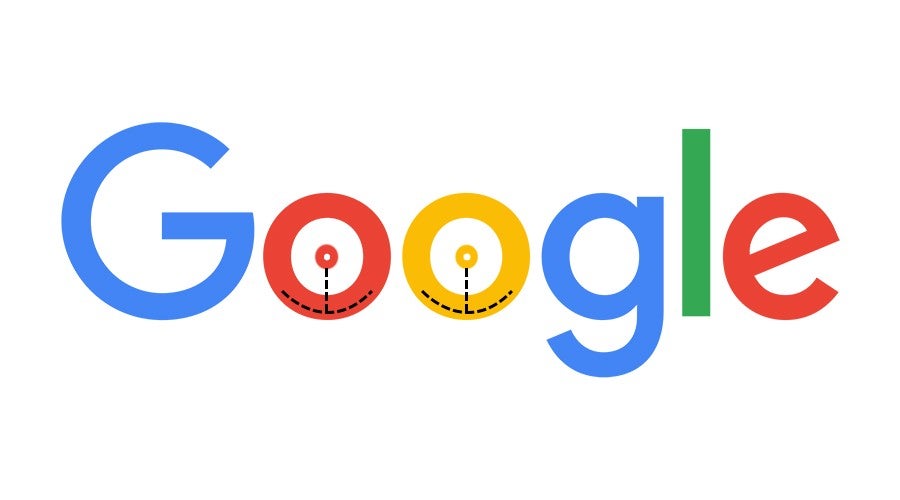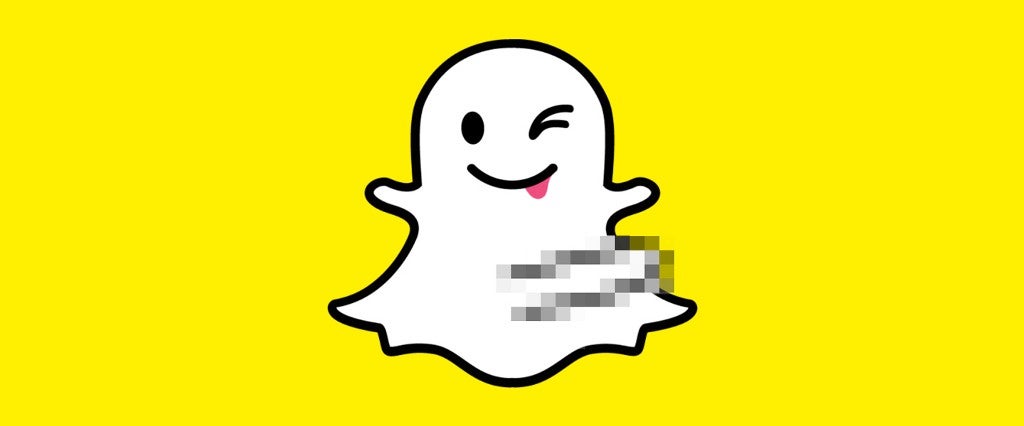It’s no secret that the internet was colonized via porn and has evolved to aid masturbation. Even though the internet has long since exploded beyond browsers and into a compartmentalized culture of apps, many of these platforms originated as porny playgrounds. But once hooked, early adopters are urged — and often forced — to cover up.
The most striking instance is Snapchat, which burst onto the scene in 2011, almost single-handedly popularizing the term “dick pic” (pushed even further by the Anthony Weiner sexting scandal). I remember the app being first explained as a tool that teenagers used to pseudo-safely trade nudes—ones that helpfully disappeared after a certain amount of time. That made sense! There was a need for ephemerality, growing more and more acutely as teens became accustomed to the idea that what goes online stays there forever. Of course, adults loved it, too, and Snapchat did little to discourage the raunchy user behavior — other than to claim more people used it for funny faces than XXX selfies. (Who would deny the publicity?) But now, four years later, the first item on Snapchat’s “What not to snap” list is “pornography.”
It’s not a coincidence that a few months in, all start-ups on the social media frontier discover the need for censorial governance. Why? Well, profit: if you aren’t selling sex outright on the internet, then you’re going for ubiquity. As a product’s user base scales to the tens and hundreds of millions, its tolerance for perversion shrinks to the lowest common denominator. American families do not (admit to!) like porn, and neither do advertisers. Thus, titans like Facebook cannot tolerate smut. Others, like Twitter and Tumblr, are still seemingly more permissive. But it’s worth noting that these more sexually-tolerant platforms constantly keep investors worried about their economic health (Yahoo! bought the now-flailing Tumblr for $1.1 billion in 2013; Twitter still cannot figure out how to monetize), while Facebook could practically print its own money.
“We’re not in the business of hosting adult-oriented videos (and it’s fucking expensive),” Tumblr writes in its guidelines on “What Tumblr Is Not For.” Tumblr requests that users refrain from uploading naughty stuff to their servers. To those just embedding their favorite clips, Tumblr advises, “You can embed anything in a Tumblr post as long as it’s lawful and follows our other guidelines.” There’s no clearly stated protocol for disciplinary action.

Whereas Twitter’s newest stepchild, Periscope, a live-streaming platform, is a nudity-free zone. But it always was; there was no switcheroo. In contrast to Twitter’s first spin-off video experiment, the six-seconds-only Vine, where the lack of moderation quickly turned the fledgling platform into a hotbed of looping jerk-off fodder. Today on Vine, general nudity falls under the umbrella of “sensitive media,” which has content initially covered by a warning users need to click through to see the loop. But it’s a slippery slope: whereas “pornography and sexually explicit content” are banned outright, according to Vine, nudity in documentary, artistic or sexually unprovocative contexts is okay. And there’s still a lot of confusion: Non-sexualized nude dancing is not cool, but “clothed sexually suggestive dancing” and breastfeeding are.
Breastfeeding is the philosophical punctum of any debate on social media decency. Breastfeeding is supposedly socially acceptable in restaurants and public spaces around America—well, not actually, but that’s the law, so it’s hypothetically tolerated. Perhaps this is because a baby’s mouth occludes the eye of the storm: a female nipple. As Miley Cyrus said to Jimmy Kimmel a few days before she hosted the “MTV Video Music Awards”: “Humans aren’t afraid of the human breast. It’s the nipple that’s the issue.” Three nights later, during the live broadcast, the pop provocateur would dazzle at-home audiences with a glimpse of one of her own during an on-air costume change (“oops!”), prompting a quick cut to B-roll.
Miley’s gestures were the swan song of this summer’s “Free the nipple!” pseudo-revolution against Facebook policies consigning a woman’s teat to limbo. Genitals and fully exposed buttocks are nonstarters, but breasts are dealt with by the censors in a discretionary manner: “We also restrict some images of female breasts if they include the nipple,” details the Facebook community guidelines. “But we always allow photos of women actively engaged in breastfeeding or showing breasts with post-mastectomy scarring.”

Equating breastfeeding with post-mastectomy scarring (typically associated with trans men who have had top surgery or cis women who have survived breast cancer) is an indicator of how social media mores are telling of societal tipping points and the inevitable corporate response. In late June, after Caitlyn Jenner became the most famous person to ever undergo her transition in the public eye, she accepted the Arthur Ashe Courage Award at the ESPYS in Los Angeles. Yet despite Jenner’s presence—her first red-carpet appearance since transitioning from male to female—it was an ad for Google that proved the most riveting aspect of the night.
The commercial took the form of a two-and-a-half minute documentary about a 26-year-old trans man named Jacob — a regular at a Midwestern gym catering to trans people. Alone in a locker room about to peel off his shirt, the crescendo of Jacob’s fitness metamorphosis built up toward the inevitable reveal of his top surgery and soon-to-be-swole upper body. I wondered, given the fierce debate around nipples, if Google would show the areolae, or if there would be an opportune crossfade timed with the money shot. They did, and I was pleased for Jacob — even though he would not have been able to go shirtless before the surgery. Certainly not in a primetime ad for a mega-corporation. (Think of Janet Jackson’s infamous — and some might argue, career-ruining — Super Bowl slip.) Google knows this, flaunting its corporate trans literacy by acknowledging Jacob for the man that he is.
Although Google’s own much-maligned social network, Google+, hasn’t made any substantial impact, it remains instrumental in online moral arbitration. While porn sites have been proven to get more traffic in a month than Amazon, Netflix and Twitter combined, with many of those visits coming through Google click-throughs, the adult industry itself is barred from Google AdWords. Despite porn’s role in prompting online searches since the origin of the internet, Google refuses to recognize the adult industry’s professional status by forbidding them from paying for the site’s advertising tools. “Online advertising can be a powerful way to reach customers, but in sensitive areas, we also work hard to avoid showing these ads when and where they might be inappropriate,” Google explains.
Unfortunately for porn producers, this means free porn tube sites, where adult material frequently gets pirated and reposted, get more play on Google than the production companies that initially created the content. Essentially, Google will strengthen its own traffic by sharing the porn you make, it just won’t help you make money on it or do anything to prevent rampant piracy (as it’s taken measures to do in the music industry).
Google results are an indefinite visual record of history, much like the newer image complex created by Instagram. As property of Facebook, Instagram has a nudity policy that reflects its parent company’s verbatim, but it has become the prime site of nipple disobedience. Scores of users — ranging from bona fide celebrities like Rihanna, who was briefly suspended from the app for posting an NSFW magazine cover, to now-Instagram-famous body activists — have had their content removed for violating Instagram’s ‘nipple laws.’ People have illustrated the hypocrisy of Instagram condoning male but not female nipples by digitally swapping the latter with the former, while Chelsea Handler chose to do so by re-creating an infamous portrait of Vladimir Putin riding topless on a horse.
So relevant are Instagram’s models of censorship that—in an awkward inversion of power, taste and priorities—the glossy Conde Nast magazine W ran an editorial last summer called “Privacy Settings,” predicated on revealing the private parts of some of Instagram’s most followed women. It was only nominally graphic — Chrissy Teigen and Anna Ewers ‘unleashed their nipples,’ while the other half-dozen models were done up in full lingerie. But it’s a bit surreal that a legacy lifestyle publication would endeavor to print images too risqué for companies created by 20-somethings. This reconfirms that the aversion to sexually explicit content is a barometer for power: nowadays the mighty will suppress it, and the flagging will let it fly.
Meanwhile, tricksters have become obsessed with attempting to get nudity onto platforms where it’s not allowed. From obvious problems like hashtags revealing #porn, #sex, #boobs and #penis to much more niche descriptors (including a hashtagged eggplant emoji and innocuous tags like #curvy), Instagram has become so determined to avoid becoming a conduit for explicit content, that non-explicit hashtags are also rendered practically inoperative. Pundits have complained that there’s no logic to which ones Instagram will go after next. Youthful digital poetry gets around the issue (for now) because perverted spellings of perverted words truly lack logic (and are hard to track). #Porn is banned but #Pron isn’t. Will #fukkkk or #fuch generate the more exciting penetrative images? Only the most curious user can say, and these aren’t the masses driving up Facebook stock.
When it comes to public airspace, the only thing America seems more transfixed by than sex is its demonization. Social media may contribute to a culture of unchecked narcissism and self-involvement. Porn, too, might be siphoning away some of the humanity we’d otherwise pour into analog sex and relationships. But noting the unnatural extraction of porn from social media accomplishes something greater than the sum of their parts. It exemplifies the power and value of provocative bodies and how they, like people, are too often exploited and then later trashed.
